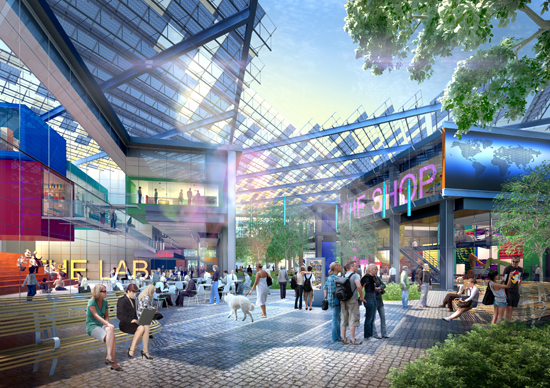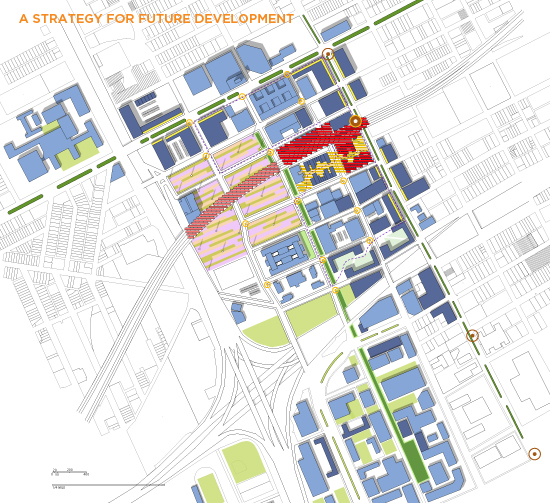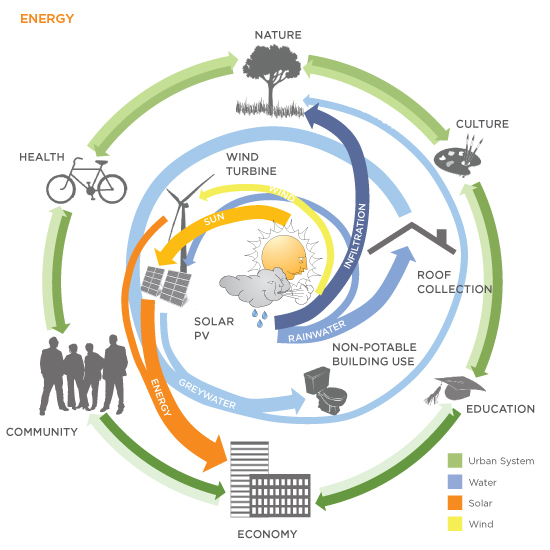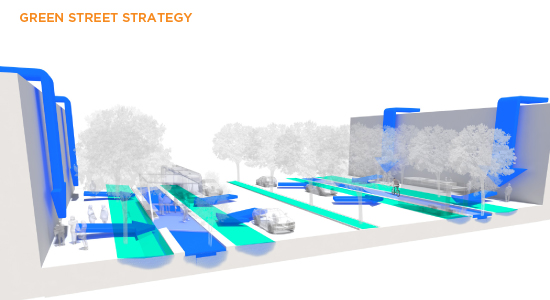
Recently PAYETTE participated in a Design Competition for a district plan in Detroit. The design team envisioned a generative cell of innovation stitches frayed nodes of urban and business activity to spark growth and called this idea the Nexus. The Nexus District seeks to engage the city through established arteries (Woodward, Grand Ave and transit). Long-term development of the District will not be constrained by the project’s current boundaries. Likely development of the district will be along natural urban tentacles, such as: east of Woodward where soft areas can accommodate new facilities for research and industry; north of Grand Ave where residential neighborhoods are strong; and stretching south towards Midtown Detroit, the cultural heart of the city.
Successful innovation districts are not comprehensively designed from the outset; they mature over time, taking advantage of emerging local talent pools and evolving business clusters of excellence. Nexus, a plan to create an innovation district in Midtown Detroit, focuses on proximity, talent growth, culture, and urban density – qualities intensely destabilized in the wake of the city’s economic decline. The plan’s success primarily depends on two attributes: (1) providing an initial complement of facilities, infrastructure and branding to implement a healthy and attractive cluster of innovation, and (2) pre-wiring the district to accommodate future development, the nature of which is unknown at this time. Adaptability to changing needs is an essential feature required of successful business and innovation districts across the country. Growth is organic and non-linear. Nexus avoids the common tendency to over-prescribe the physical and programmatic structure at the outset, and relies instead on a minimal initial armature and an organic pattern for growth.


Nexus will not be a closed precinct, but a fully integrated, generative cell of Detroit, established by strategically reconnecting existing urban nodes such as the Henry Ford Health System, TechTown North and TechTown South (emerging business hubs in the area), and the central campus of Wayne State University. When stitched together, these nodes define the heart of a contiguous, crescent-shaped urban section. This strategy reduces the investment required to establish the district to just a handful of new developments and reserves a large area for future growth. While this core serves to unify and establish the larger 300-acre district, the focused initial development on 65 acres generates visible momentum faster. In doing so, the Nexus innovation plan serves as a model for smart development in cities whose economic boom-to-bust has left their urban fabric frayed and their resources increasingly disconnected.

Nexus adopts the 2030 Challenge for Planning and aims to dramatically reduce energy and water consumption through an integrated strategy involving the targeted removal of inefficient structures, infill of high performance buildings, and the generation of renewable energy through solar array and wind farm. Nexus will decrease total district energy and water usage by 5% while increasing the total building gross area by over 40%.

High-performance streetscapes of the Nexus district replicate the natural hydrologic cycle by creating an urban swale that will manage storm water volume and improve water quality, providing ve getation that will reduce heat island effect and capture atmospheric greenhouse gas through biological processes, and introducing biophillic connections that bring nature to the community.

